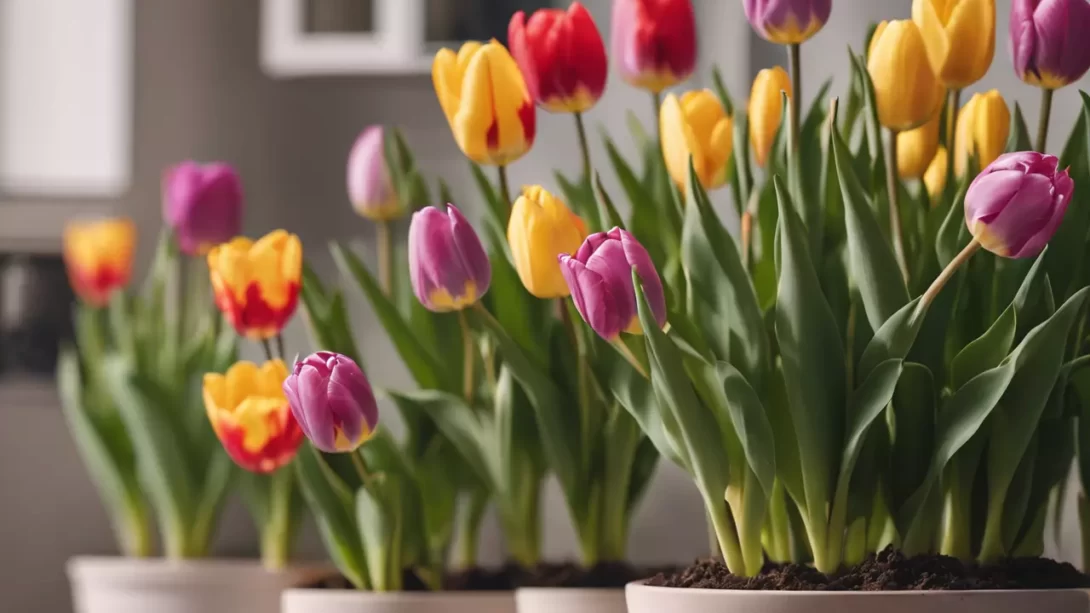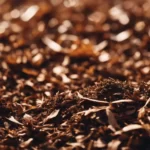Tulips, with their vibrant colors and elegant shapes, are a popular choice for gardeners and flower enthusiasts. However, once their blooming season is over, many are left wondering how to care for these beautiful plants. Proper post-bloom care is crucial to ensure the health of the bulbs and to encourage reblooming in the following season. This care involves understanding the tulip’s life cycle and adapting maintenance routines accordingly.
Tulip Dormancy
After tulips bloom, they enter a phase of dormancy, a natural part of their growth cycle. During dormancy, tulips conserve energy and prepare for the next growing season. In potted tulips, this phase is critical as the limited soil and space can affect the bulb’s ability to rejuvenate. Recognizing the signs of dormancy is key to providing the right care, which includes reducing water and stopping fertilization.
Caring for Tulips Immediately After Blooming
Immediately after the tulips have bloomed, it’s important to continue watering them while the leaves are still green. The leaves are essential for photosynthesis, helping the bulb to store energy for the next year. However, avoid overwatering, as this can lead to bulb rot. Fertilizing is not typically necessary after blooming, but if the plant looks like it needs a boost, a balanced, slow-release fertilizer can be applied.
Pruning and Deadheading Spent Tulips
Once the tulip flowers have faded, deadheading, or removing the spent blooms, can be beneficial. This prevents the plant from expending energy on seed production. However, leave the foliage in place until it turns yellow and dies back naturally. This allows the plant to continue photosynthesizing and feeding the bulb. Prune the dead leaves only after they have completely withered, as premature removal can weaken the bulb.
Preparing Tulips for Dormancy
As tulips move towards dormancy, their care requirements change. Gradually reduce watering as the foliage begins to yellow and die back. This reduction in water signals to the bulb that it’s time to start preparing for dormancy. Additionally, ensure that the pot has good drainage to prevent any waterlogging, which can be detrimental to the bulbs. Once the leaves have died, you can stop watering altogether. This period of rest is essential for the tulips to conserve energy for the next growing season.
Storing Tulip Bulbs
For potted tulips, you have the option to store the bulbs during their dormant phase. Once the foliage has completely died back, gently remove the bulbs from the soil and clean off any remaining dirt. It’s important to inspect the bulbs for signs of disease or damage and only store healthy bulbs. Dry the bulbs for a few days in a well-ventilated area, then place them in a cool, dry, and dark place for storage. A mesh bag or paper bag can be ideal for this, as they allow air circulation. The ideal temperature for storing tulip bulbs is between 50-60°F (10-15°C).
Replanting Tulips for the Next Season
When it’s time to replant the tulips, typically in the fall, choose a well-draining potting mix to ensure healthy growth. Tulip bulbs prefer a cool period before they start their new growth cycle, so chilling the bulbs prior to planting can be beneficial, especially in warmer climates. Plant the bulbs at a depth of about three times their height and space them a few inches apart. After planting, water the bulbs thoroughly to settle the soil around them. With proper care, these replanted bulbs will bloom beautifully in the following spring.
Alternative Uses for Spent Tulips
While spent tulip blooms and foliage are often discarded, they can still be useful. The wilted flowers can be added to compost piles, contributing to a nutrient-rich compost. Alternatively, if you practice eco-friendly gardening, the dead plant material can be used as a natural mulch in garden beds, providing nutrients to the soil as it decomposes. This approach promotes a sustainable cycle in your gardening practices.
Recycling Tulip Plants
Once your tulips have completed their blooming and growth cycle, consider eco-friendly ways to recycle the plant. Spent tulip plants, especially the foliage, can be a valuable addition to your compost bin. As they decompose, they return nutrients back to the soil, creating rich compost that can be used to nourish other plants in your garden. This approach not only reduces waste but also contributes to a sustainable gardening cycle.
Seasonal Considerations for Potted Tulips
For tulips grown in pots, it’s important to consider the impact of seasonal changes. If you live in a region with harsh winters, you may need to protect your dormant tulip bulbs from extreme cold. This can be done by moving the pots to a sheltered location, like a garage or basement, where they can stay cool but not freeze. In spring, once the risk of frost has passed, the pots can be moved back outdoors to encourage the new growth cycle.
Planning for Next Year’s Bloom
To enjoy a vibrant display of tulips year after year, it’s beneficial to plan ahead. Consider rotating the types of bulbs you plant or trying different varieties to create a diverse and visually appealing display. Additionally, replenishing the potting soil or adding new compost can provide essential nutrients for the next growing season. Proper planning and care can result in a stunning tulip display each spring.
Conclusion
Caring for potted tulips after they bloom is essential for ensuring their beauty and vitality in future seasons. By understanding and implementing proper post-bloom care techniques, such as preparing for dormancy, storing bulbs, and replanting, you can enjoy the delightful presence of these flowers year after year. Whether recycling them into compost, protecting them through the winter, or planning for the next bloom, there are numerous ways to make the most of your tulip plants and contribute to a sustainable and flourishing garden.




